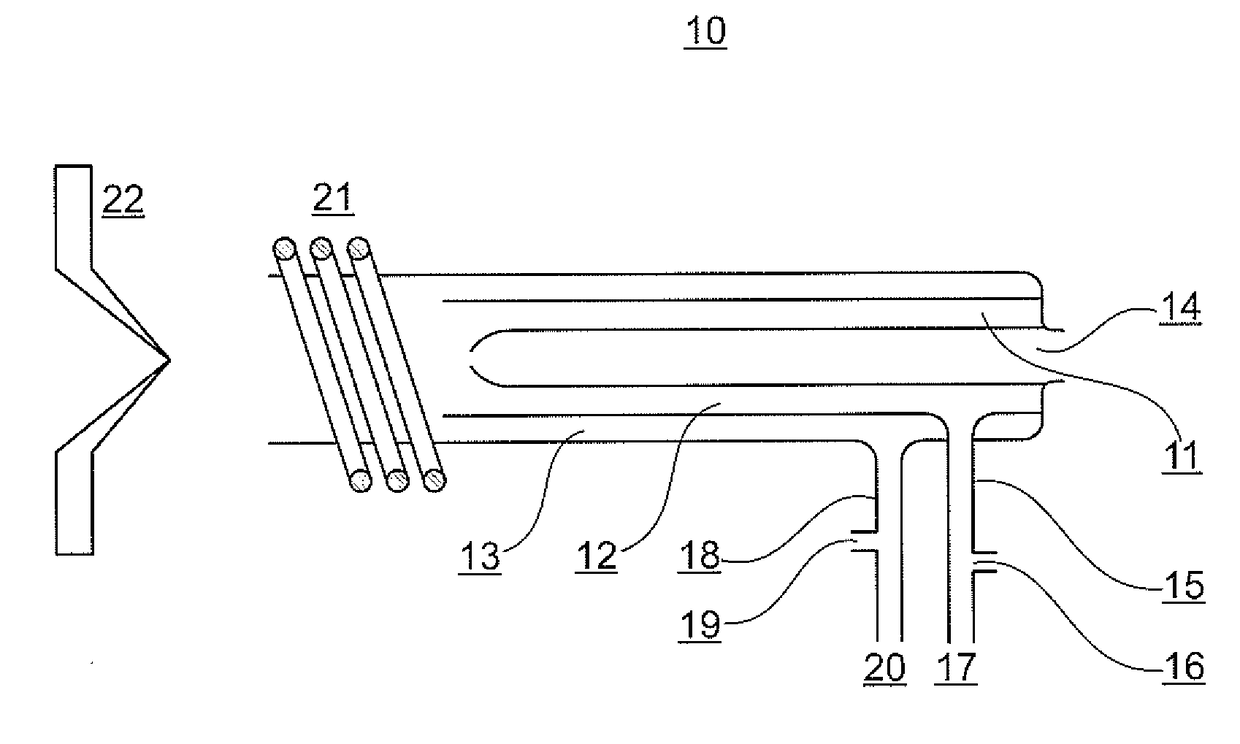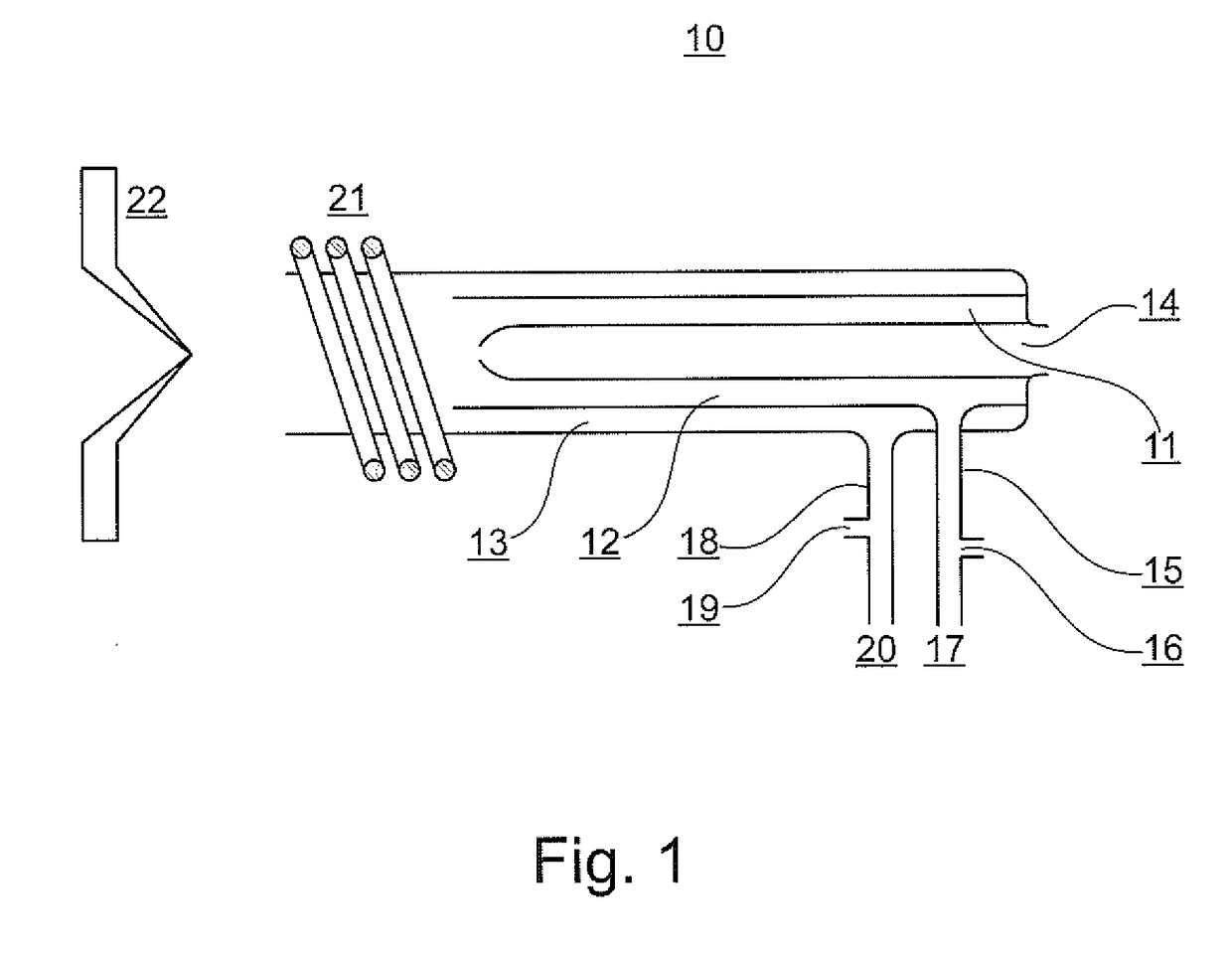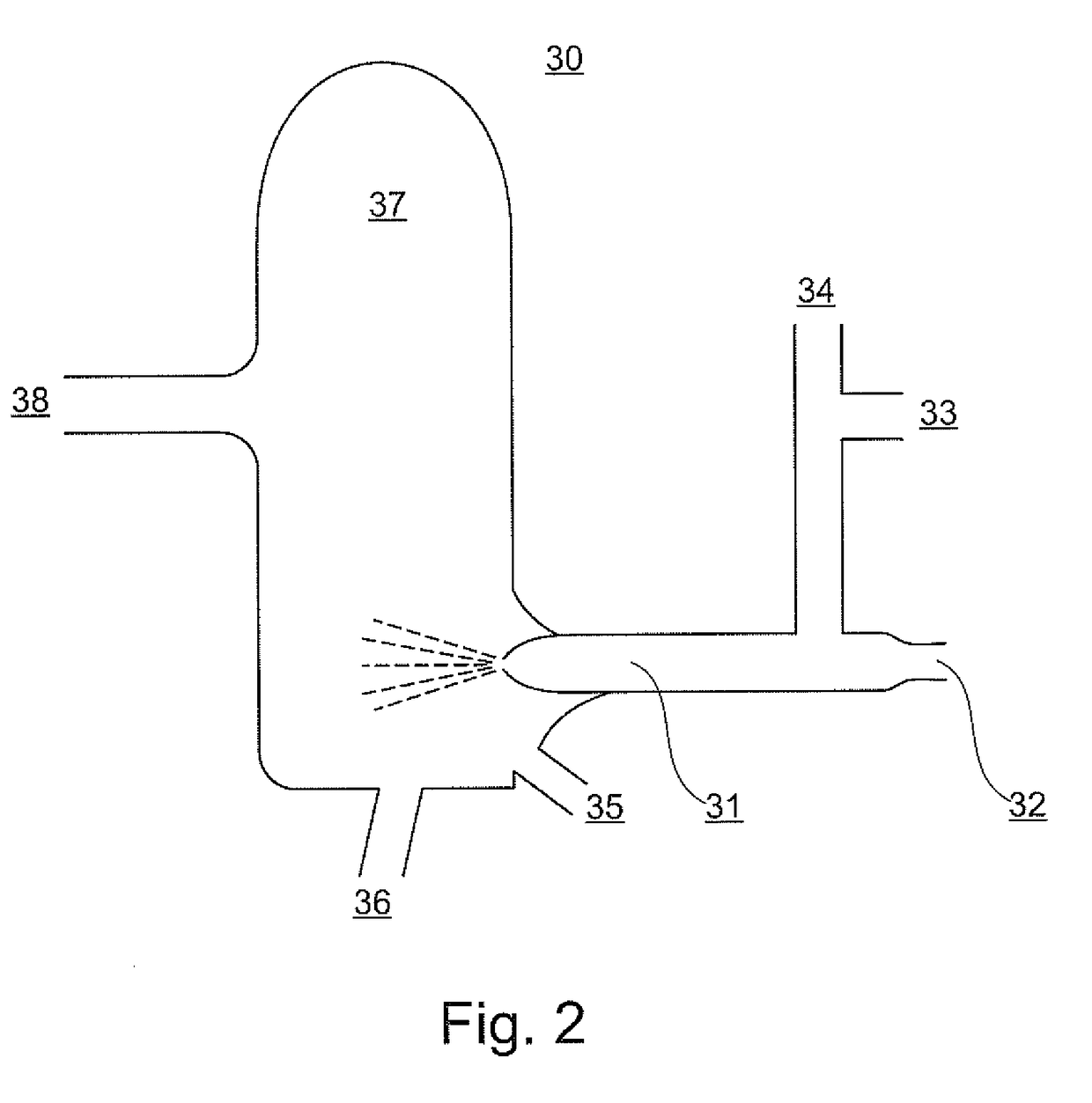Addition of reactive species to icp source in a mass spectrometer
a mass spectrometer and reactive species technology, applied in mass spectrometers, instruments, particle separator tubes, etc., can solve the problems of limiting the attainable precision and accuracy of analysis, adding contamination to samples, isotopic fractionation of analyte to be extracted, etc., to promote the formation of molecular adductions, promote the generation of interference-free mass spectrum, and reduce interference with other ions
- Summary
- Abstract
- Description
- Claims
- Application Information
AI Technical Summary
Benefits of technology
Problems solved by technology
Method used
Image
Examples
example 1
[0100]Introduction of O2 into the ICP source preferentially leads to the formation of TiO over CaO. The metal oxide that is formed in the ICP source is fragmented in the collision cell, leading to the formation of elemental ions that is mass analyzed in the downstream mass analyzer. When analyzed on a mass spec that has a mass filter upstream of the collision cell, the mass filter is preferably set to only transmit oxides in a mass range that includes TiO. This means that potential interferences on Ti isotope analysis are not transmitted by the mass filter, leading to reduced interference on the mass spectrum.
[0101]The mass filter can be set to only transmit adduct ions that are formed in the ICP source (e.g. oxidized species, nitrogen adducts, etc.) but not the mass of the product ions that are produced in the collision cell. Adduct ions can be broken into smaller mass product ions in the collision cell so that products appear at a smaller mass which was not transmitted by the firs...
example 2
[0102]In an isotope ratio analysis of Fe on an interfering background of Cr species, the addition of N2 to ICP source, for example to the nebulizer, leads to formation of FeN and CrN. However, the rate of formation of FeN is much greater than for CrN, which means that the molecular adduct ions formed in the ICP source will be predominantly FeN species. Other interferences can include 40Ar16O on 56Fe and 46Ar14N on 54Fe. Mass filter can be set to transmit only masses 63 to 73, i.e. the mass filter does not transmit the interfering 40Ar16O and 40Ar14N species and also not unreacted Cr isotopes. The transmitted FeN species is fragmented by adding a collision gas such as He to the collision cell, leading to the formation of elemental Fe isotopes, which are mass analyzed in the downstream mass analyzer.
[0103]Adduct ions that are transmitted by the mass filter can also be converted into further molecular adducts in the collision cell. Thereby, it is possible to mass analyze a larger mass ...
example 3
[0104]The mass filter is controlled to only transmit ions with a mass-to-charge ratio in a range that includes the mass-to-charge ratio of molecular adduct ions formed in the ICP source, for example a mass window of 16 amu centered around 48Ti16O that has a mass of 64. The transmitted adduct ions are further reacted into larger mass product ions in the collision cell. The further molecular adduct species (i.e. the larger mass product ions) are subsequently transmitted into the mass analyzer, where their mass is analyzed on a clean background. For example, background interference by Ca, V and / or Cr species can be problematic during analysis of 48Ti16O. To overcome such interference, a further reaction of 48Ti16O with CO2 can be done in the collision cell, generating higher molecular weight species that can be mass analyzed in the absence of interferences.
PUM
 Login to View More
Login to View More Abstract
Description
Claims
Application Information
 Login to View More
Login to View More - R&D
- Intellectual Property
- Life Sciences
- Materials
- Tech Scout
- Unparalleled Data Quality
- Higher Quality Content
- 60% Fewer Hallucinations
Browse by: Latest US Patents, China's latest patents, Technical Efficacy Thesaurus, Application Domain, Technology Topic, Popular Technical Reports.
© 2025 PatSnap. All rights reserved.Legal|Privacy policy|Modern Slavery Act Transparency Statement|Sitemap|About US| Contact US: help@patsnap.com



